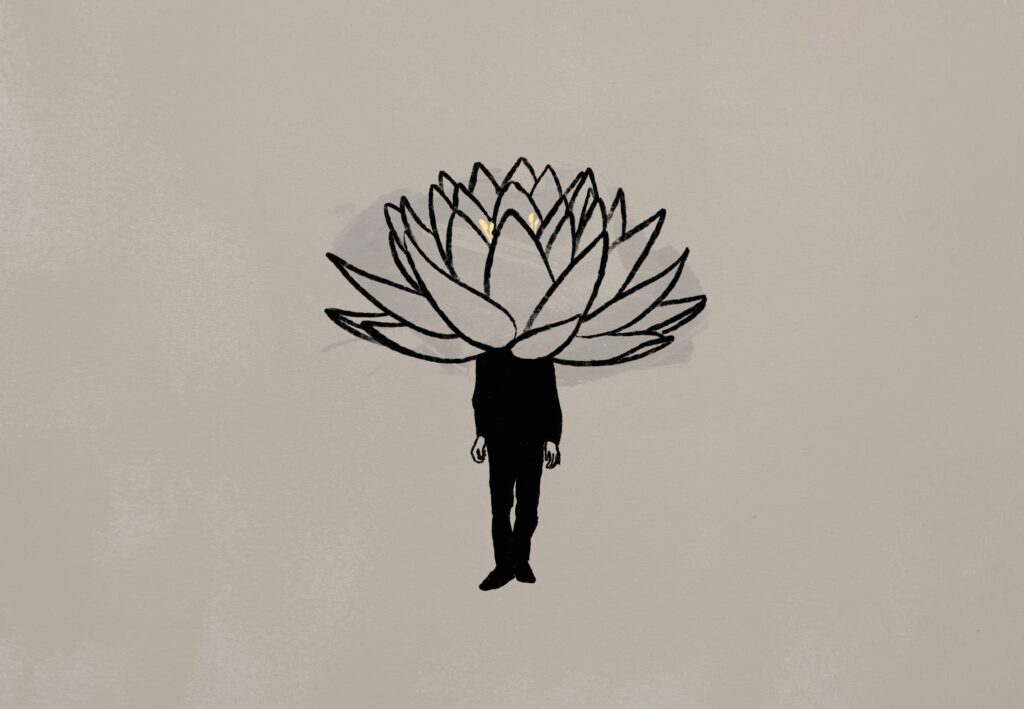
“Let everything happen to you
― Rainer Maria Rilke
Beauty and terror
Just keep going
No feeling is final.”
What strikes you as beautiful in your life?
While we cannot turn our gaze away from suffering in the world, we cannot let it prevail. Perhaps our role is to focus on beauty.
This is not about putting a positive spin on things, nor about turning our attention away from horror. This is not a discussion if the glass is half full or empty. The point is to understand how beauty emerges from horror and harness the blossom.
Why? If we can do this, we can use beauty as an antidote and an anchor. This could bring more clarity to our world – and work. In the words of Ralph Waldo Emerson, “[b]eauty is the form under which the intellect prefers to study the world.”
A perfect illustration for this idea is the lotus flower, which is literally born out of mud. This flower is rich with symbolism: it relates to the consciousness that all life is rooted in swamps, fed by decomposing materials, and that it grows by stretching upwards through fluid and changing environments, where it opens to space and light.
Mire and fluidity, in which the flower grows, symbolise the most crude and heavy qualities of nature, including the nature of our minds and spirits. The flower, which is ornamented with pretty petals, is the incarnation of qualities of clarity and subtlety.
[We at the Rights Studio would like to think of ourselves as emulating the spirit of the lotus flower, emerging from ugliness, against all odds, like a tiny green shoot that magically grows through cracks in concrete.]
Striving for justice, Byung Chul Han writes in Saving Beauty, is motivated by its beauty. For both Plato and Aristotle, beauty was much more than an aesthetic concept, it was about ethics. Justice, for one, was considered among the most beautiful things (kalokagathia for Aristotle, meaning the ‘beautiful good’), where the good is subordinated to the beautiful. Furthermore, if we think about the English word ‘fair’ it means both just and beautiful.
In the same way that beauty in the natural world is often found in symmetry, justice is, in some ways, about seeking symmetry in our societies.
So perhaps much of the work of human rights activists could be seen in this light, it emerges from darkness and horror and seeks to bring balance. The United Nations Charter was, after all, drafted and adopted as a consequence of the devastation of the second world war.
Beauty can be seen in the light of justice, but it is also a necessity. Rachel Carson said that if we could only focus our attention on the wonders of the universe, we may be less inclined to destroy it. The tragic irony, of course, is that it is in nature that real beauty finds expression – and it is precisely that beauty that we are woefully failing to protect.
So what has gone wrong?
If justice is about symmetry in our society, then our relationships with others – as well as to the natural world – are also about symmetry. Han says beauty “occurs where things turn towards each other and enter into relation with each other,” it is therefore linked with humility, it makes us less narcissistic, it asks us to let go, to step aside rather than pushing to the fore.
He quotes Simone Weil who said beauty required us to “give up our imaginary position as the center, to renounce it, not only intellectually but in the imaginative part of our soul, that means to awaken to what is real and eternal, to see the true light and hear the true silence.”
For references and further resources, visit our inspiration page. See also Beauty as Intervention and Seeking Simplicity
Words, Veronica Yates and illustration Miriam Sugranyes
